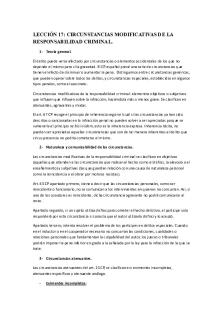Lecture Notes 17 PDF

| Title | Lecture Notes 17 |
|---|---|
| Course | Operations Management |
| Institution | Brandman University |
| Pages | 2 |
| File Size | 51.8 KB |
| File Type | |
| Total Downloads | 62 |
| Total Views | 172 |
Summary
These lecture notes were written for the MGTU 315 Course taught by Professor Castillo-Shiffer....
Description
Reasons to Outsource and the Resulting Benefits Improvement-Driven Reasons •
Improve quality and productivity.
•
Shorten cycle time.
•
Obtain expertise, skills, and technologies that are not otherwise available.
•
Improve risk management.
•
Improve credibility and image by associating with superior providers.
Organizationally Driven Reasons •
Improve effectiveness by focusing on what the firm does best.
•
Increase flexibility to meet changing demand for products and services.
•
Increase product and service value by improving response to customer needs.
Logistics Outsourcing •
Logistics: the management functions that support the complete cycle of material flow –
Purchase and internal control of materials
–
Planning and control of WIP
–
Purchasing, shipping, and distribution of finished product
•
Emphasis on lean inventory means there is less room for delivery errors
•
Logistics companies have complex computer tracking technology that reduces the risk in transportation and allows the logistics company to add more value to the firm
•
Third-party logistics providers track freight to tell customers exactly where its drivers are and when deliveries will be made
Green Sourcing •
Being environmentally responsible has become a business imperative
•
Many firms are looking to their supply chains to deliver “green” results
•
Financial results can often be improved through going green
•
A comprehensive green sourcing effort should assess how a company uses items that are purchased internally
•
It is also important to reduce waste
Green Sourcing Process 1. Assess the opportunity –
Evaluate and prioritize costs
2. Engage sourcing agents –
Cross-functional ownership of the process
3. Assess the supply base –
Engage vendors in the process
4. Develop the sourcing strategy –
Develop quantitative criteria
5. Implement sourcing strategy –
Select vendors and products based on criteria
6. Institutionalize the sourcing strategy –
Metrics and audits to monitor performance
Total Cost of Ownership •
Total cost of ownership (TCO): an estimate of the cost of an item
•
Includes all the costs related to the procurement and use of an item, including any related costs in disposing of the item
•
Can be applied to internal costs or more broadly to costs throughout the supply chain
Measuring Sourcing Performance •
•
Inventory turnover: how often inventory is replaced during the year –
Cost of goods sold: the annual cost for a company to produce the goods or services provided to customers
–
Average aggregate inventory value: the total value of all items held in inventory
Weekly of supply: how many weeks’ worth of inventory is in the system at a particular point in time...
Similar Free PDFs

LecciÓn 17 - Lecture notes 17
- 6 Pages

Chapter 17 - Lecture notes 17
- 15 Pages

Chapter 17 - Lecture notes 17
- 7 Pages

LEC17 - Lecture notes 17
- 28 Pages

CH17 - Lecture notes 17
- 17 Pages

L18 - Lecture notes 17
- 2 Pages

Tulips - Lecture notes 17
- 3 Pages

17ATOC - Lecture notes 17
- 4 Pages

Persuasion - Lecture notes 17
- 2 Pages

Lecture Notes 17
- 2 Pages

lecture 17 notes
- 4 Pages

MFS - Lecture notes 17
- 4 Pages
Popular Institutions
- Tinajero National High School - Annex
- Politeknik Caltex Riau
- Yokohama City University
- SGT University
- University of Al-Qadisiyah
- Divine Word College of Vigan
- Techniek College Rotterdam
- Universidade de Santiago
- Universiti Teknologi MARA Cawangan Johor Kampus Pasir Gudang
- Poltekkes Kemenkes Yogyakarta
- Baguio City National High School
- Colegio san marcos
- preparatoria uno
- Centro de Bachillerato Tecnológico Industrial y de Servicios No. 107
- Dalian Maritime University
- Quang Trung Secondary School
- Colegio Tecnológico en Informática
- Corporación Regional de Educación Superior
- Grupo CEDVA
- Dar Al Uloom University
- Centro de Estudios Preuniversitarios de la Universidad Nacional de Ingeniería
- 上智大学
- Aakash International School, Nuna Majara
- San Felipe Neri Catholic School
- Kang Chiao International School - New Taipei City
- Misamis Occidental National High School
- Institución Educativa Escuela Normal Juan Ladrilleros
- Kolehiyo ng Pantukan
- Batanes State College
- Instituto Continental
- Sekolah Menengah Kejuruan Kesehatan Kaltara (Tarakan)
- Colegio de La Inmaculada Concepcion - Cebu



